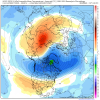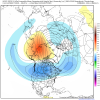-
Hello, please take a minute to check out our awesome content, contributed by the wonderful members of our community. We hope you'll add your own thoughts and opinions by making a free account!
You are using an out of date browser. It may not display this or other websites correctly.
You should upgrade or use an alternative browser.
You should upgrade or use an alternative browser.
2020-2021 Winter: Early Thoughts
- Thread starter Fountainguy97
- Start date
NBAcentel
Member
Well well well... JB caved in again, and his new forecast is much cooler.
Old:
View attachment 49716
New:
View attachment 49717
He gonna jinx us again.... never F-ING LEARNS
NoSnowATL
Member
Still warm for him. I’ll take avg every year.Well well well... JB caved in again, and his new forecast is much cooler.
Old:
View attachment 49716View attachment 49718
New:
View attachment 49717View attachment 49719
NBAcentel
Member
I like this updated forecastWell well well... JB caved in again, and his new forecast is much cooler.
Old:
View attachment 49716View attachment 49718
New:
View attachment 49717View attachment 49719
Webberweather53
Meteorologist
CPC Doesn’t look that SERish, I would even take this look quite honestly, even if it’s AN View attachment 49720View attachment 49721
The temperature forecast looks par for the course in the context of the last decade of winters.
If his forecast verified , I’d get about 45-50” of snow! All in! ?Well well well... JB caved in again, and his new forecast is much cooler.
Old:
View attachment 49716View attachment 49718
New:
View attachment 49717View attachment 49719
Mr. Golf
Member
If his forecast verified , I’d get about 45-50” of snow! All in! ?
Tarheel, you are most definitely in a better spot than everyone on this forum for sure. I would take 2-4 inch snow here in Arkansas and be happy all winter
cd2play
Member
I'm going to go with a warm winter, but with a window of opportunity in December. Winter will be a one trick pony, with the winter weather event occurring during last 10 days of December.
Jessy89
Member
I'm going to go with a warm winter, but with a window of opportunity in December. Winter will be a one trick pony, with the winter weather event occurring during last 10 days of December.
White Christmas perhaps
Sent from my iPhone using Tapatalk
cd2play
Member
White Christmas perhaps
Sent from my iPhone using Tapatalk
cd2play
Member
It's going to be interesting, now that many schools have virtual learning, zoom, etc., what happens if/when a storm happens on a school day.
LickWx
Member
Well , heavy wet snow cuts off power ... so ... we can still get snow days !!! Yayyyy! Though NCSU is even worse than wake county when it comes to making these decisions .It's going to be interesting, now that many schools have virtual learning, zoom, etc., what happens if/when a storm happens on a school day.
cd2play
Member
They'll probably make students/home schoolers resort to using i-phones.Well , heavy wet snow cuts off power ... so ... we can still get snow days !!! Yayyyy! Though NCSU is even worse than wake county when it comes to making these decisions .
Prestige Worldwide
Member
NoSnowATL
Member
About 1 to 1.5 above. We can work with that. ?View attachment 49814
About as ugly as it gets for winter weather lovers according to the euro.
View attachment 49814
About as ugly as it gets for winter weather lovers according to the euro.
I would run with only a +1C departure from normal this winter....it would be a drastic improvement.
cd2play
Member
Looks like #equality to me. The whole nation is above normal.View attachment 49814
About as ugly as it gets for winter weather lovers according to the euro.
NBAcentel
Member
Cadi40
Member
If there’s one thing I’ve learned it’s to never pay attention to long term winter forecasts.
NoSnowATL
Member
That and the first 383hrs of the GFS.If there’s one thing I’ve learned it’s to never pay attention to long term winter forecasts.
That and the first 383hrs of the GFS.
The last 383.
Nice blocking! Keeping that hot air from sliding off the east coast!Uh it’s sad that I say this but I see potential here lmao, often times ninas are better early on vs late Jan/febView attachment 49815
It might snow, it might not. Worry bout it later
NBAcentel
Member
RollTide18
Member
It might snow, it might not. Worry bout it later
It may ice too.
Since it's a La Nina it probably will ice.
NBAcentel
Member
NBAcentel
Member
NBAcentel
Member
Maybe we can sneak a late October hurricane into the SE coast.The flashbacks, this pattern is not that uncommon during a La Niña winter unfortunately, we’ve definitely been avoiding the SER But how much more longer is the question View attachment 49959
cd2play
Member
FixedMaybe we can sneak a late October snowstorm into the NE.
Clippers, FTWI don't really hate what the CFS is continuing to show for December.
View attachment 49941
I really, really don't hate the January map.
View attachment 49942
I kind of hate the February one, so I'm not going to waste time posting it.
The average 1st snow here is Nov 15th! ~75% of October’s see some snow, I think! Will keep y’all posted!Maybe we can sneak a late October hurricane into the SE coast.
The precipitation field has to be more expansive on the western side! ?Maybe we can sneak a late October hurricane into the SE coast.
NoSnowJoe
Member
NBAcentel
Member
I see a lot of comparisons to the La Nina of 10-11. While that was a great Dec into Jan and most would love a repeat, that was mainly due to a strong -NAO. Those seem to be hard if not impossible to come by anymore in winter for whatever reason, so I'm still saying this winter will suck and we'll quickly want to forget it ever happened.
NBAcentel
Member
The big high latitude blocking we’re going to see is really gonna help weaken the SPV, keep watching how that progresses
Good. His observations forgot to include 2010 and hurricane seasons don't mean much for correlation to winter. Also, he is awful at winter forecasts.Glen Burns with some interesting observations today.
View attachment 49963


















